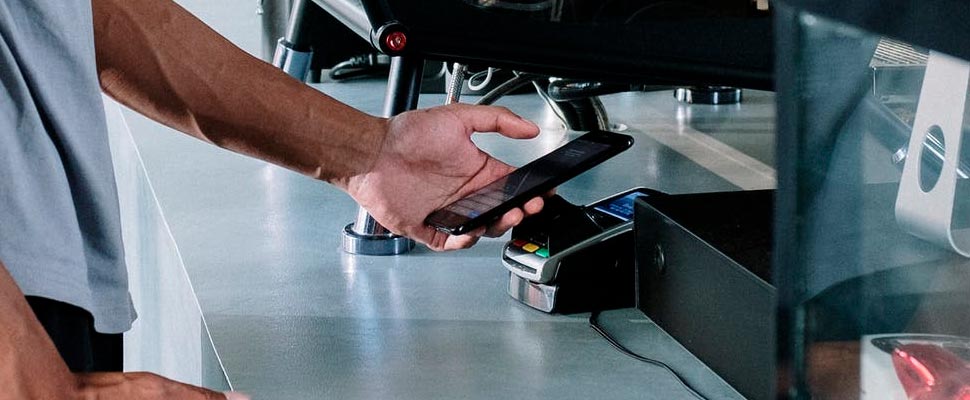What Is The Current State Of Contactless Payments And the IoT
The Internet of Things (IoT) has reshaped the ways in which we interact in the modern world today.

David Smith
Listen to this article
The Internet of Things (IoT) has reshaped the ways in which we interact in the modern world today. But just like IoT, the trend of contactless payments has also gained traction recently. As the name suggests, contactless payments are ways in which merchants and customers can make transactions without physical contact.
Instead of swiping a credit card on a Point of Sale terminal, they can just bring their contactless card or device into close proximity with the terminal and the transaction is processed. Contactless payments are more convenient and faster than conventional card or cash transactions.
Though the two technologies may seem different, IoT and contactless payments are growing together. IoT provides ease and convenience by automating processes and changing devices into “smart” decision-making devices, whereas contactless payments have greatly simplified the process of money transfer.
When used together, they can be used for innovating business models such as car key fobs that pay for takeaway food, bracelets that can use the wearer’s pulse instead of a PIN code or signature, or clothes that store credit card details. Essentially, contactless payments based on IoT enable faster processing of payments and provide convenience to merchants and customers.
Why use IoT-enabled Contactless Payments?
Consumers now no longer need to swipe their cards, enter PIN codes or sign receipts when making payments. It’s not only convenient for customers but also for merchants who are able to speed up their transactions resulting in larger sales volumes. According to Chase, time spent at PoS terminals has reduced 30 to 40 percent due to contactless payments. Another study by American Express indicates that contactless transactions are 53 percent faster than traditional cards and 63 percent faster than cash-based payments. As a result of lesser requirements of cash-handling, merchants have reduced costs, better operational efficiency and lesser maintenance for contactless readers.
When integrated with IoT, the contactless approach gets even better. With increased transparency provided by IoT-based transactions, the governments will be in more control to track transactions and make it hard for tax evaders to dodge the system. Similarly, money-based crimes will lessen due to the fact that cashless transactions can be traced easily as compared to paper currency. Also, when people stop carrying cash, burglaries and mugging incidents will also decrease.
Also read: 3 myths about the middle class in Latin America
The Current State of Contactless Payments and IoT
According to a report published by Markets and Markets called Contactless Payment Market, the market size of contactless payments is expected to increase from 10.3 billion US dollars in 2020 to 18 billion US dollars by 2025, with Compound Annual Growth Rate CAGR of 11.7% during forecast period. The continued adoption of high-bandwidth wireless communications and wearable devices has resulted in a continuous growth of IoT-enabled contactless transactions.
By 2024, the value of remote transactions is expected to be more than $6 trillion, which amounts to an increase of 53 percent from the year 2019. It will further be encouraged due to an increase in the use of connected smart devices such as wearables and phones, which makes payments without cash very quick and convenient.
Though a completely cashless society may not be seen in the near future, the use of cashless payments will certainly dominate. Some experts are of the opinion that since lesser number of consumers will use cash, governments should only focus on smaller bills and stop printing higher denomination notes.
Let us consider the example of Amazon Go, Amazon’s cashless store that uses sensors and IoT cameras to track a customer’s purchase. They keep a record of all items the consumer puts in their cart and as they leave, they are charged for those items automatically. Not only do the customers save time by not having to wait in long checkout queues, it also helps businesses avoid costs incurred due to disgruntled customers where they may leave a shop without buying anything due to long waiting lines.
IoT and Contactless Payments – Opening Ways for Alternative Payments
The advancement of IoT technology has opened up different ways in which payments can be made. If we assume that the customer can authorize their IoT devices for payments, there are three payment models that can be materialized.
Also read: Post-pandemic Latin America: the challenges for the region
Card Tokenization
Many international card systems have been implementing non-card payments successfully with tokenization. One of the widely used methods of credit card tokenization today is Near Field Communication (NFC), which replaces a Primary Account Number (PAN). Furthermore, the card application inside a smartphone or cloud generates a unique card verification value which is different for each transaction. This card tokenization can be utilized for turning an IoT device into a payment-enabled one. For instance, a tokenized payment card can be connected to a car, and can be used to pay for all services related to the car such as parking, filling gas and toll payments.
Instant Credit Transfer
Instant credit transfers enable customers to send and receive money within seconds in real time from one place to another over encrypted communication. This means that a user from one part of the world can instantly send money to another person in another part of world. Integrating Instant Payments with open APIs can bring many innovative opportunities along with IoT payment setups that are already made possible with card tokenization.
Digital Currencies
The distributed ledger technology is one of the most talked-about IoT payments methods today due to its support for the IoT environment. Because ledgers are distributed, IoT devices can have direct transaction without depending upon a third party. Though it’s still not clear how digital currency initiatives can be materialized practically at regulatory levels, a regulated system for digital currency payments can open boundless opportunities.
Conclusion
As contactless payments and IoT continue to steadily dominate the payments scenario, we need to prioritize customer’s security along with convenience as well. But the time is not very far where IoT will allow people to buy things safely and conveniently without the fear of running short of time, losing cash or carrying physical money unnecessarily as a liability. As the society acts smarter and pays in a cashless manner, people will have more time, and hence, more money.
David Smith is a cryptographer with 12 years of experience in both the public and private sectors. He is currently working on his second startup (currently in stealth mode) that will track and interpret the use of contactless payments in the Greater China region.




